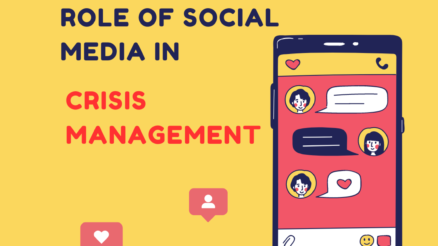Change can bring exciting opportunities in the workplace, but it also triggers a range of emotional reactions among employees.
Anxiety, resistance, sadness, and even excitement are common responses to workplace change.
These emotions, if left unaddressed, can have a significant impact on both individuals and the organization as a whole.
This article explains emotional reactions to change in the workplace and explore strategies for effectively managing and navigating these emotions.
By understanding and addressing the emotional landscape during times of change, organizations can foster a more resilient, engaged, and productive workforce.
Let’s read to learn more about this.
Understanding emotions reactions to change in the workplace
Understanding emotional reactions to change in the workplace is crucial for several reasons.
Firstly, emotions play a significant role in how individuals perceive and respond to change. By acknowledging and addressing these emotional reactions, organizations can create a more supportive and empathetic work environment. This, in turn, helps to alleviate stress, build trust, and improve overall employee well-being.
Secondly, unaddressed emotional reactions can have detrimental effects on individuals and the organization. Employees who experience high levels of anxiety, resistance, or sadness may become disengaged, leading to decreased productivity and performance. Unmanaged emotions can also lead to increased conflict, strained relationships, and a decline in teamwork and collaboration.
Lastly, recognizing and managing emotional reactions to change demonstrates a commitment to employee well-being and organizational culture. When organizations prioritize emotional support during times of change, they build trust, loyalty, and employee satisfaction. Employees feel valued and heard, which contributes to a positive work environment and enhances overall employee engagement and retention.
05 Common emotional reactions to change in the workplace
Following are five common emotional reactions to change in the workplace.
01. Shock and Denial
Shock and denial are natural reactions for any change in the workplace. When faced with significant changes such as organizational restructuring, mergers, or shifts in job responsibilities, individuals may initially feel a sense of shock or disbelief. This reaction occurs as a result of the sudden disruption to their familiar work environment or expectations.
During the shock phase, employees may find it challenging to comprehend or accept the reality of the change. They may experience a sense of numbness or detachment, unable to fully process or understand the implications of the change. This initial shock is often accompanied by a sense of denial, where individuals may resist accepting the change as a legitimate or necessary course of action.
02. Anxiety and Fear
When faced with uncertain or unfamiliar situations, individuals may feel a heightened sense of anxiety and fear. These emotions arise from various sources, such as concerns about job security, the impact of change on one’s role or responsibilities, or the fear of the unknown.
Anxiety is characterized by feelings of unease, worry, and apprehension. Employees may experience a sense of restlessness, difficulty concentrating, or an increased level of stress. The fear of the future, potential negative outcomes, or the inability to cope with the demands of the change can contribute to anxiety.
Fear, on the other hand, typically stems from a perceived threat or danger associated with the change. Employees may fear losing their job, not being able to adapt to new technologies or processes, or feeling incompetent in their revised roles. This fear can be paralyzing, hindering individuals from embracing the change and impeding their ability to perform at their best.
03 Resistance and Anger
These emotions arise from a sense of frustration, powerlessness, or disagreement with the proposed changes. Employees may resist change due to concerns about the impact on their job security, the disruption of their established routines, or the perception that the change is unnecessary or poorly executed.
Resistance can manifest in various forms, such as passive resistance (ignoring or avoiding the change), active resistance (expressing disagreement or openly challenging the change), or passive-aggressive behavior (engaging in subtle acts of opposition). This resistance is often rooted in a desire to protect the familiar and maintain a sense of control over one’s work environment.
Anger can emerge when employees feel that their needs, opinions, or contributions are being disregarded or undervalued during the change process. This anger may stem from a perceived lack of communication, consultation, or involvement in decision-making. Employees may express their anger through overt expressions of frustration or through more subtle behaviors such as increased cynicism or decreased cooperation.
04. Sadness and Grief
These emotions arise when individuals mourn the loss of familiar routines, relationships, or aspects of their work environment that are changing or no longer present. Employees may feel a deep sense of sadness, longing, or a sense of loss as they adjust to the new circumstances.
Sadness during workplace change can stem from various factors, such as the loss of a familiar physical workspace, changes in team dynamics or composition, or the need to let go of previous job responsibilities or roles. Employees may also grieve the loss of a sense of stability, predictability, or a work environment they were comfortable in.
Grief is a natural response to loss and often follows a series of stages, such as denial, anger, bargaining, depression, and acceptance. Employees may cycle through these stages as they process the changes and adapt to the new reality. It’s important to note that the grieving process is individual and may vary in intensity and duration for different employees.
05. Excitement and Anticipation
Excitement and anticipation are positive emotional reactions that can be experienced by employees during workplace change. Individuals experience these emotions when they perceive the change as an opportunity for growth, development, and positive outcomes. Employees may feel enthusiastic, energized, and optimistic about the potential benefits that the change can bring.
Excitement stems from the anticipation of new possibilities, such as learning new skills, taking on new responsibilities, or being part of innovative projects. It is often fueled by a sense of curiosity and eagerness to explore uncharted territories. Excitement can drive employees to embrace the change and actively engage in the transition process.
Anticipation, on the other hand, is characterized by a sense of hopeful expectation for future outcomes. Employees may anticipate positive changes in their work environment, increased efficiency, enhanced collaboration, or opportunities for personal and professional growth. This anticipation can create a sense of motivation and drive, encouraging employees to actively participate in the change process.
Factors influencing emotional reactions to change in the workplace
Here are three most powerful factors that drive emotional reactions to change in the workplace.
Personal attachment to the current state
Emotional reactions to change in the workplace can be influenced by individuals’ personal attachment to the current state of their work environment. Employees develop familiarity, comfort, and a sense of identity within their existing roles, teams, and routines. When faced with change, the prospect of letting go of these familiar aspects can evoke emotional responses such as sadness, grief, or resistance. The stronger the personal attachment to the current state, the more intense the emotional reaction may be.
Uncertainty and ambiguity
Uncertainty and ambiguity surrounding workplace change can trigger emotional reactions, including anxiety and fear. Employees often crave stability, predictability, and a clear sense of direction in their work environment. When faced with change that introduces unfamiliarity or lacks clarity, individuals may experience heightened levels of stress and anxiety. The lack of information about the nature of the change, its potential impact, or the future state can make individuals feel uncertain and uneasy.
Perceived impact on job security and stability
Employees’ emotional reactions to workplace change are strongly influenced by their perception of how the change will affect their job security and stability. Change can create concerns and fears about potential layoffs, restructuring, or a significant shift in job responsibilities. These worries can lead to emotions such as anxiety, fear, and resistance. Employees may feel a sense of vulnerability and uncertainty about their future within the organization, which can impact their engagement and performance.
Negative effects of unaddressed emotions
If emotional reactions are left unaddressed then it may cause negative effects that include:
Decreased productivity and engagement
When emotions related to workplace change go unaddressed, employees may experience a decrease in productivity and engagement. Unresolved emotional reactions can consume employees’ mental and emotional energy, making it challenging for them to focus on their work tasks.
If employees feel disengaged or disconnected due to unaddressed emotions, they may become less motivated and less likely to contribute their best efforts to their work. This can result in a decline in productivity and overall performance.
Increased resistance and conflict
Failure to address emotions related to workplace change can lead to increased resistance and conflict within the organization. Unaddressed emotions may manifest as passive or active resistance, where employees refuse to cooperate, challenge the change, or engage in disruptive behaviors. This resistance can create a hostile work environment, where conflicts arise between employees, teams, or with leadership. Lack of open communication, disregard for employees’ emotions, or failure to address concerns can intensify negative emotions, escalate conflicts, and hinder effective collaboration.
Employee burnout and turnover
Unaddressed emotions can contribute to employee burnout and increase the risk of turnover. When employees’ emotions go unacknowledged or unresolved, they may experience chronic stress, emotional exhaustion, and a sense of being overwhelmed. The sustained negative emotional state can lead to burnout, which can result in reduced productivity, increased absenteeism, and a decline in overall well-being.
Moreover, if employees feel their emotions are disregarded or invalidated, they may become disenchanted with the organization, leading to a higher likelihood of seeking opportunities elsewhere. Employee turnover can disrupt the work environment, negatively impact team morale, and incur costs associated with recruiting and training new employees.
Positive outcomes of managing emotional reactions
If emotions are efficiently and effectively addressed then there are positive outcomes both at individual and organisational level. Some of these outcomes include:
Enhanced resilience and adaptability
Managing emotional reactions to workplace change can enhance employees’ resilience and adaptability. By addressing emotions and providing support, organizations help employees build the emotional resilience necessary to cope with the challenges and uncertainties that come with change. Employees who feel understood, supported, and equipped with the necessary resources to navigate change are more likely to develop a growth mindset and adapt to new circumstances. They become better equipped to handle future changes and are more resilient in the face of adversity.
Improved collaboration and teamwork
Effectively managing emotional reactions to change in the workplace fosters improved collaboration and teamwork. When employees feel heard, valued, and supported during change, they are more likely to engage in open and constructive communication. Addressing emotions allows employees to build trust and empathy, enhancing their ability to collaborate effectively with colleagues, teams, and leaders. By promoting a culture of understanding and support, organizations can create an environment where individuals work together towards common goals, share ideas, and collaborate more seamlessly.
Increased employee satisfaction and loyalty
Managing emotional reactions to workplace change contributes to increased employee satisfaction and loyalty. When organizations actively address and support employees’ emotions, employees feel valued, cared for, and appreciated. This leads to higher levels of job satisfaction and a sense of being well-supported during challenging times. Employees who perceive their emotions are being acknowledged and addressed are more likely to develop a stronger sense of loyalty towards the organization. They are also more inclined to stay committed to their work, contribute their best efforts, and remain engaged with their roles and responsibilities.
Strategies for Managing Emotional Reactions to Change in the Workplace
01. Effective Communication
Effective communication is a crucial strategy for managing emotional reactions to change in the workplace. When employees are experiencing emotions related to change, clear and transparent communication becomes even more important to address their concerns, provide information, and foster understanding. Here’s how effective communication can be utilized
Communicate the details of the change promptly and ensure that the information is accurate and consistent. Employees should receive information about the reasons behind the change, the anticipated impact, and the timeline. Providing this information in a timely manner helps reduce uncertainty and speculation, minimizing negative emotional reactions.
Utilize various communication channels to reach employees effectively. This can include in-person meetings, company-wide emails, video conferences, or internal messaging platforms. Different individuals may prefer different channels, so using a mix of methods ensures that the message reaches everyone and allows for questions and concerns to be addressed promptly.
02. Active listening and empathy
Active listening and empathy are essential components of managing emotional reactions to change in the workplace. They involve attentively and genuinely engaging with employees to understand their emotions, perspectives, and concerns.
Active listening is the practice of fully focusing on and comprehending what the other person is saying. It goes beyond simply hearing the words and involves giving undivided attention to the speaker. By practicing active listening, you can express genuine interest in what employees are saying.
Empathy involves putting oneself in someone else’s shoes and understanding their emotions, experiences, and perspectives. It is the ability to connect with others on an emotional level and show genuine care and concern.
Empathy creates an environment where employees feel valued, understood, and supported. It promotes trust, enhances communication, and allows for a more empathetic response to their emotional reactions during workplace change.
03. Addressing concerns and providing reassurance
Addressing concerns and providing reassurance are crucial strategies for managing emotional reactions to change in the workplace. Employees may have various concerns and anxieties related to the change, and it is important to address these concerns directly and provide reassurance to alleviate their emotional distress.
For this to happen, create an environment of open and honest communication where employees feel comfortable expressing their concerns. Encourage them to share their worries and questions openly. Respond to their concerns with transparency, providing accurate information and addressing any misconceptions. This helps build trust and reduces uncertainty.
It is also important to address concerns related to job security and stability explicitly. Communicate any measures being taken to safeguard job positions, explain the opportunities for growth and development that the change may bring, and provide reassurance that employees’ skills and contributions are valued. Emphasize the organization’s commitment to supporting employees through the change and ensuring their well-being.
04. Encouraging participation and ownership
Encouraging participation and ownership is an effective strategy for managing emotional reactions to change in the workplace. By involving employees in the change process and empowering them to take ownership, organizations can foster a sense of engagement, commitment, and control.
Engage employees early on in the change process by seeking their input and involvement. This can be done through focus groups, surveys, or brainstorming sessions where employees can share their ideas, concerns, and suggestions.
Clearly communicate to employees how their individual roles contribute to the overall success of the change. Help them understand the significance of their contributions and how they fit into the larger picture. When employees see the impact they can make, they are more likely to feel a sense of ownership and responsibility for the change.
Provide opportunities for employees to make decisions and take ownership of specific aspects of the change. Delegate tasks, assign responsibilities, and encourage autonomy within defined boundaries. Empowering employees to make decisions gives them a sense of control and ownership over the change process, reducing feelings of powerlessness and resistance.
Encourage collaboration and teamwork among employees during the change. Create cross-functional teams or task forces that bring together individuals from different departments or levels of the organization. By working together towards a common goal, employees feel a sense of camaraderie and shared ownership, which strengthens their emotional connection to the change.
05. Providing emotional support
Change can be challenging and can evoke a range of emotions in employees. By offering emotional support, organizations can help employees navigate these emotions and cope with the stress and uncertainties associated with change.
Create an environment where employees feel safe and comfortable sharing their concerns, fears, and frustrations. Provide opportunities for one-on-one discussions between employees and managers or designated support personnel. These confidential conversations allow employees to express their emotions, ask questions, and seek guidance. Managers can offer a listening ear, validate emotions, and provide reassurance or advice tailored to individual needs.
Offer access to professional counseling services or coaching programs to support employees’ emotional well-being. These resources can provide a confidential and objective space for employees to explore their emotions, develop coping strategies, and receive guidance on managing the challenges of change.
Encourage the formation of peer support networks or employee resource groups where individuals going through similar changes can connect and provide support to one another. These networks allow employees to share experiences, exchange coping strategies, and provide a sense of solidarity and understanding.
Provide training programs that equip employees with skills to build resilience and manage stress during change. These programs can teach techniques such as mindfulness, stress reduction exercises, and strategies for maintaining a positive mindset. By empowering employees with tools to manage their emotions, organizations can support their well-being throughout the change process.
Promote self-care practices among employees to help them manage their emotions during change. Encourage regular breaks, healthy work-life balance, and self-care activities such as exercise, mindfulness, or hobbies. Provide resources and information on self-care techniques to support employees in maintaining their emotional well-being.
Final Words
Emotional reactions to change in the workplace are a natural and common occurrence. Understanding and managing these emotions are vital for organizations to navigate change successfully and maintain a positive work environment. By recognizing the various emotional reactions employees may experience during change, organizations can implement strategies to address them effectively. This ultimately leads to smoother transitions, increased employee well-being, and a stronger foundation for future growth and success.



